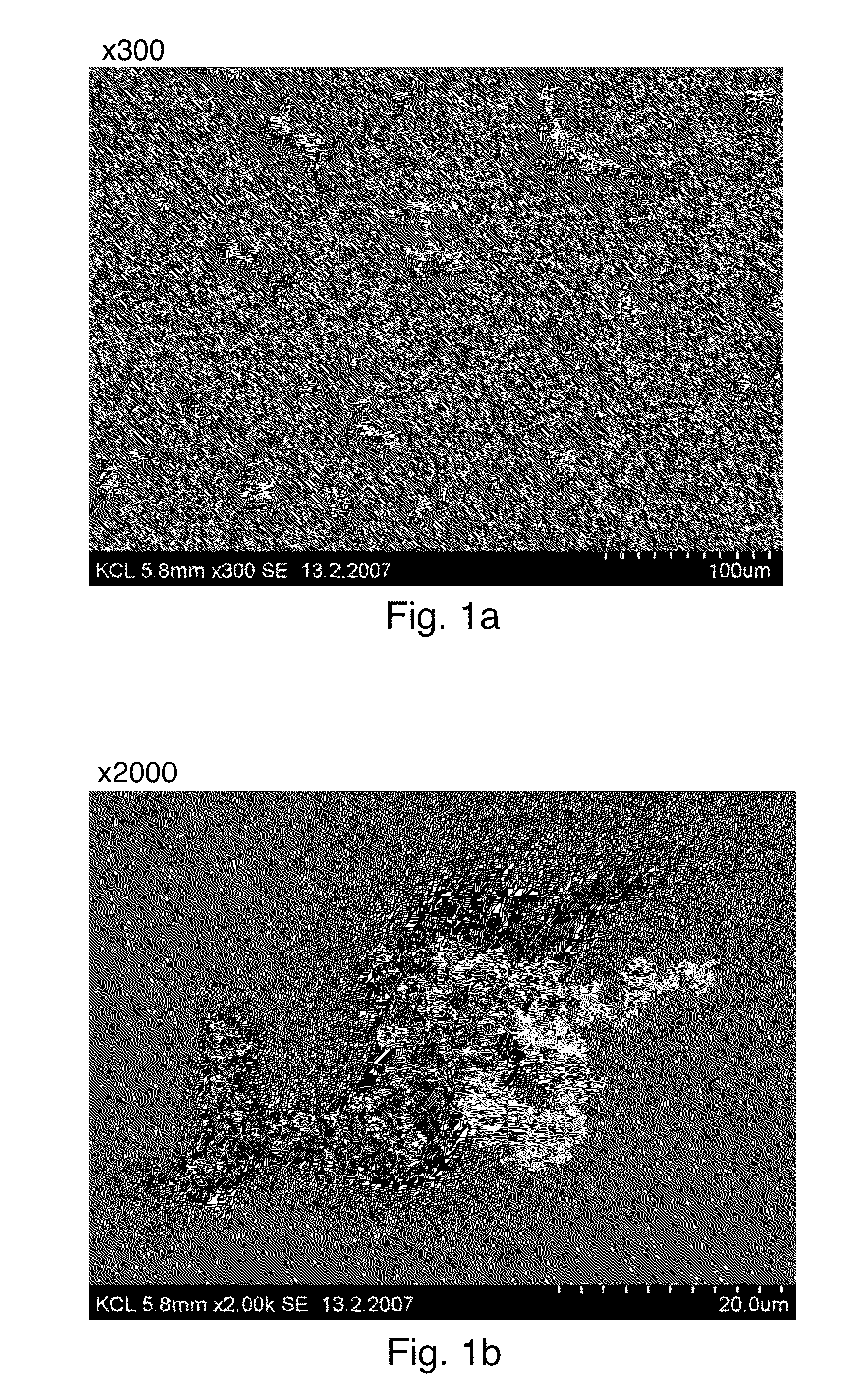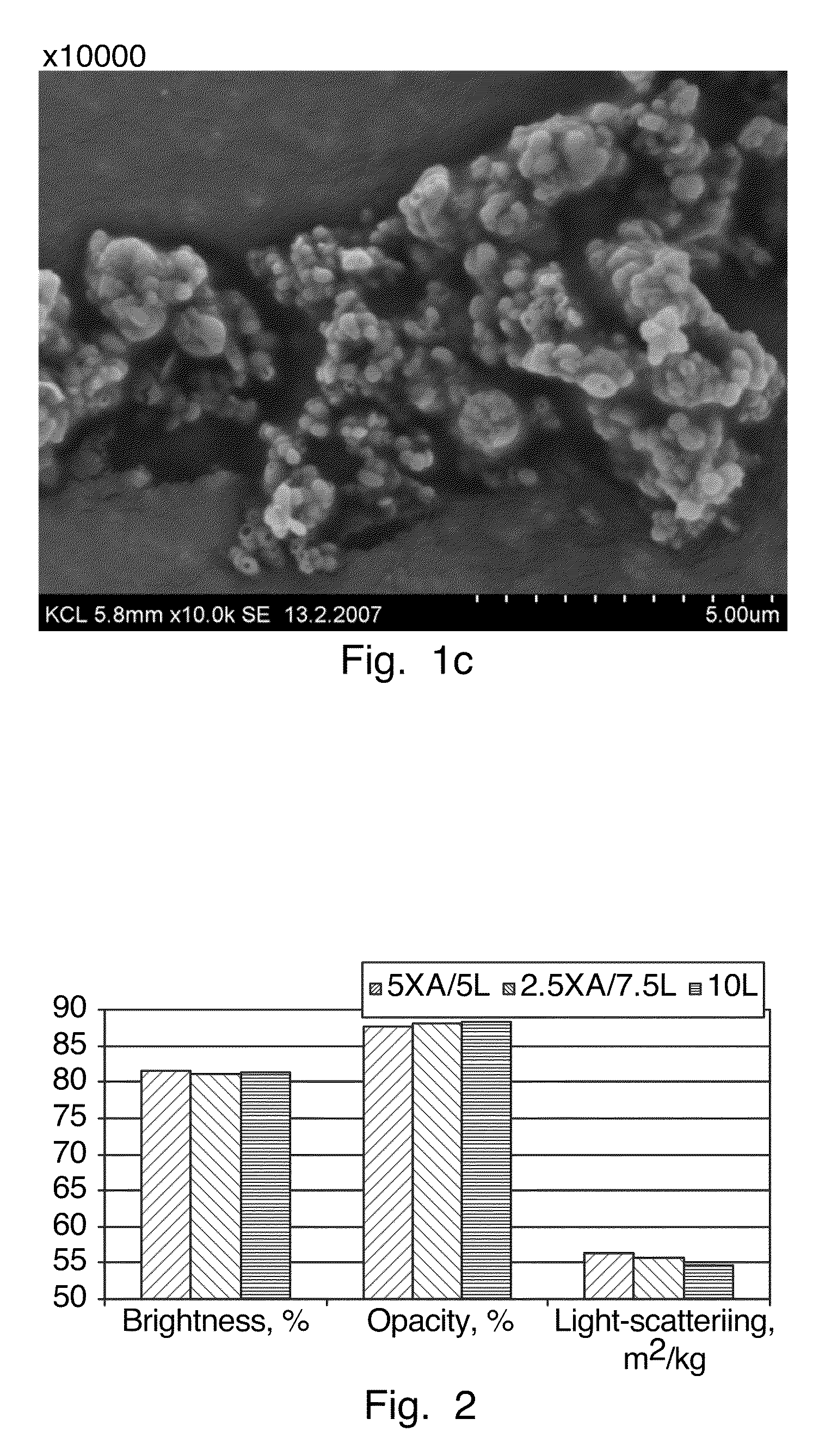Novel dispersions and method for the production thereof
a technology of hemicellulose and ester, which is applied in the direction of antifouling/underwater paint, coatings without pigments, textiles and paper, etc., can solve the problems of derivatization or not being used as hemicellulos
- Summary
- Abstract
- Description
- Claims
- Application Information
AI Technical Summary
Benefits of technology
Problems solved by technology
Method used
Image
Examples
example 1
Production of Hemicellulose-Acetate Using Sodium Hydroxide as a Catalyst
[0079]Oat based xylan (Sigma Xylan from Oat Spelts) was used as a hemicellulose starting material. Acetic acid (200 g) and acetic anhydride (116 g) were mixed together and added to a round-bottom reactor equipped with a mixer and a reflux condenser. Hemicellulose (30 g) was slurried in the mixture and then the temperature of the reaction mixture was raised to +40° C. A 50% aqueous solution of sodium hydroxide (6.6 g, equaling 22% of the amount of the hemicellulose) was cautiously added as a catalyst. After the addition of the catalyst the temperature of the reaction mixture was raised to +115° C. The reactants were allowed to react for 6 h, during which time the mixture partly gelled. The hemicellulose acetate was precipitated from the water and was washed until the pH of the filtrate was 5. The precipitate was dried in a hot cupboard.
[0080]Acetyl content: 35.2% based on the conversion of hydroxyl groups to acet...
example 2
Production of Hemicellulose Acetate Using Sulphuric Acid as a Catalyst
[0081]Oat based xylan (Sigma Xylan from Oat Spelts) was used as a starting material.
Acetic acid (150 g) and acetic anhydride (150 g) were mixed together and added to a reactor equipped with a mixer and a reflux condenser. Into the mixture strong sulphuric acid (0.1 g) was cautiously added. Hemicellulose (30 g) was slurried in the mixture and was allowed to mix for 15 minutes at the room temperature after which the temperature of the reaction mixture was raised to +50° C. and the reaction was continued for 3 hours. The hemicellulose acetate precipitate was washed several times with water and was dried in the hot cupboard.
[0082]Acetyl content: 5% based on the total weight of the product. Dry matter concentration: 91.5%
example 3
Production of Hemicellulose Acetate Using Base Present in the Starting Material as a Catalyst
[0083]Hemicellulose isolated from birch (KCL xylan) was used as a starting material. Acetic acid (200 g) and acetic anhydride (116 g) were mixed together and added to a round-bottomed reactor equipped with a mixer and with a reflux condenser. Hemicellulose (20 g) was slurried into the mixture and the reaction mixture was slowly heated up to +115° C. and was allowed to react for 6 h. The precipitate was washed with water until the pH of the filtrate was 5. The precipitate was dried in a hot cupboard.
[0084]Acetyl content: 46.8% based on the total weight of the product. Dry matter: 95%
[0085]The glass transition temperature of the xylan acetate was 206° C. and it was extremely sparsely soluble in water and in most common organic solvents.
PUM
| Property | Measurement | Unit |
|---|---|---|
| Length | aaaaa | aaaaa |
| Fraction | aaaaa | aaaaa |
| Fraction | aaaaa | aaaaa |
Abstract
Description
Claims
Application Information
 Login to View More
Login to View More - R&D
- Intellectual Property
- Life Sciences
- Materials
- Tech Scout
- Unparalleled Data Quality
- Higher Quality Content
- 60% Fewer Hallucinations
Browse by: Latest US Patents, China's latest patents, Technical Efficacy Thesaurus, Application Domain, Technology Topic, Popular Technical Reports.
© 2025 PatSnap. All rights reserved.Legal|Privacy policy|Modern Slavery Act Transparency Statement|Sitemap|About US| Contact US: help@patsnap.com



